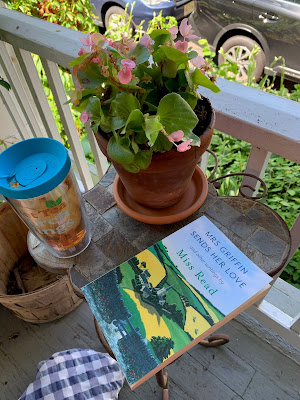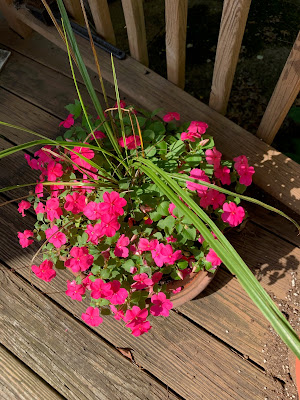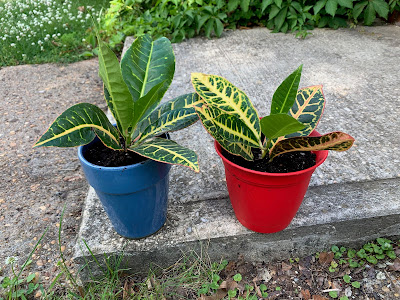I first discovered Miss Read books in 2006, a very hard year in my life. I saw a description of two Miss Read books in the Bas Bleu book catalog and took a chance on these two stories —- the first two books in the Thrush Green series, published in 1959 and 1961, respectively .
I loved the books at once and was best pleased (to use a Miss Read phrase) to discover that there were many more to be read, both in the Thrush Green collection and also a whole other series about a town on the English Downs named Fairacre.
These books and the stories within them were both my salvation in that year and a source of great joy to me since I first read them. In theory, books set in mid-20th century rural England had almost nothing in common with my life as a 21st century single mama living in the the suburbs. In fact, they proved timeless and reminded me to enjoy the small pleasures in life - a cup of tea, the vexing pleasure of abundant garden produce, the chirp of the birds on a Spring morning, the day in February when there is still a bit of sunlight to be had after 5 pm, the couch of Fall leaves on a cool morning, the first blooms of the coming Spring….really the list is endless.
Dora Saint, the writer behind the Miss Read books, passed away in 2012, at the age of 101. This means that though her stories live on (and are among my favorite re-reads), there are no new works to be sought. Or that was the case until recently, when Orion Publishing released a collection of essays and small compositions that were the first Dora Saint works; all bits published in English newspapers and magazines that weren’t published in the United States.
New Miss Read!
I bought a copy straight away and set it in my to-be-read pile with a great deal of excitement. The book has light editing and commentary by Dora Saint’s daughter, Jill Saint, and re-productions of many of the illustrations from the original Miss Read books.
At just over 300 pages, it was a splendid treat to spy in my book pile as the worst days of the pandemic raged on here in my corner of the world. I read the introduction and back cover endlessly, but I saved the book itself to read after school was out. Though I am typically the sort of voracious reader who gobbles up a good book in just a few days, I treated myself to just a little bit each day, so as to enjoy my treat just a little bit longer.
The volume ends with some classroom vignettes from the early drafting of the Fair Acre books. Though Miss Read preferred the stories of her Thrush Green books (a fact I discovered in this volume), the Fair Acre stories are my favorites. Written in first person by the schoolteacher herself, whom Saint describes as a woman who, “…was born fully clothed in sensible garments and aged about forty,” they connect with me in ways too numerous to explain.
Ahhh, Miss Read. Always practical and with a sentimental heart that never turns maudlin, she loves her students for the children they are, with practical affection and a tolerant patience that I both admire and seek to achieve. This collection was a balm for my anxieties and a reminder of the joy to be found in the simple pleasures of life, like a good book to be read on the front porch come some happy Summer morning.




































